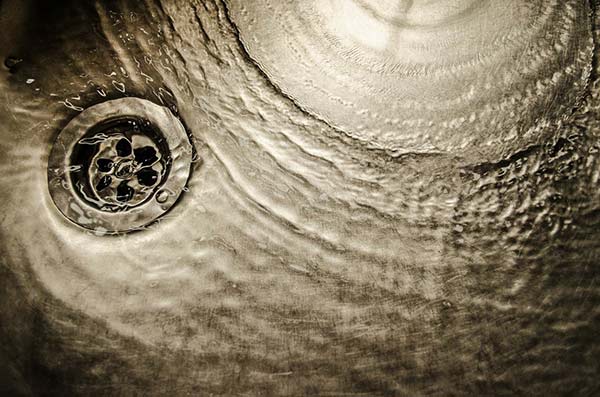
Some people sing in the shower, and some use this time for shower thoughts. Some common thoughts and questions we’ve heard from our clients are:
- Where is all this water going?
- Is this the same water I drink?
- How do they get the soap out?
To calm things down — no, this isn’t the exact same water you drink. We've previously touched on where your water comes from, but let's talk about where it goes once it swirls down the drain...
Where Does Used Water Go After the Drain?
The answer depends on how your home’s plumbing is connected.- If you're connected to a sewer system, your used water travels through a vast network of pipes. More specifically, each drain in your home connects to a single main pipe that carries all your wastewater out to the street. From there, it joins a larger pipe that collects water from other homes on your block, which then connects to an even bigger one serving nearby neighborhoods. This branching network continues, with each connection feeding into the next, until the water finally reaches the wastewater treatment plant. And no matter where the water starts — flushing the toilet, washing dishes, or doing laundry — every drain in your home is part of this same connected system.
- If you are not connected to a sewer system, your water drains into a septic tank. In the tank most of the solids settle out while the liquid water will go on to flow through underground pipes that have holes drilled into them; those holes allow the water to seep out and into the ground. This particular system of pipes is called a leach field.
How Does Wastewater Treatment Work?
If your water took the sewer system route, it made its way to a wastewater treatment plant. There, it goes through a multi-step process:- First, the wastewater you washed down your drains will go through the primary treatment process, which aims to remove all large particles and debris.
- Then, for the secondary treatment process, organic matter is removed with bacteria that break down pollutants before the water is disinfected with chlorine to remove the bacteria.
- Finally, in some cases, the water goes through one last advanced treatment process to get rid of any remaining pollutants that could go on to cause problems in the area. For example, if there are large amounts of nitrogen or phosphorus in the treated water that would be detrimental to the bodies of water it would be added to, they'd be taken out.
What Happens After the Water is Treated?
So your water flows through all kinds of pipes to the wastewater treatment plant, where it is treated, cleaned, and made safe to be reentered into the environment and local bodies of water (rivers, lakes, etc.). The treated water could go on to become drinking water, it may be used to irrigate crops, it could help sustain aquatic life, and it can even end up back in your shower, where we started.
We treat your drains with the same care we’d take with our own. That’s why we’re The Picky People's Plumber. We offer a drain service guarantee that your water lines won’t stop up after a visit from us for at least 5 years, 5 months, and 5 days (it's called our Tri-5 Program)! If you're having trouble with your drains and are looking for help, give us a call at Ken’s Plumbing! You can reach us by phone anytime at (864) 242-5511 or can contact us online to schedule service.


.png)